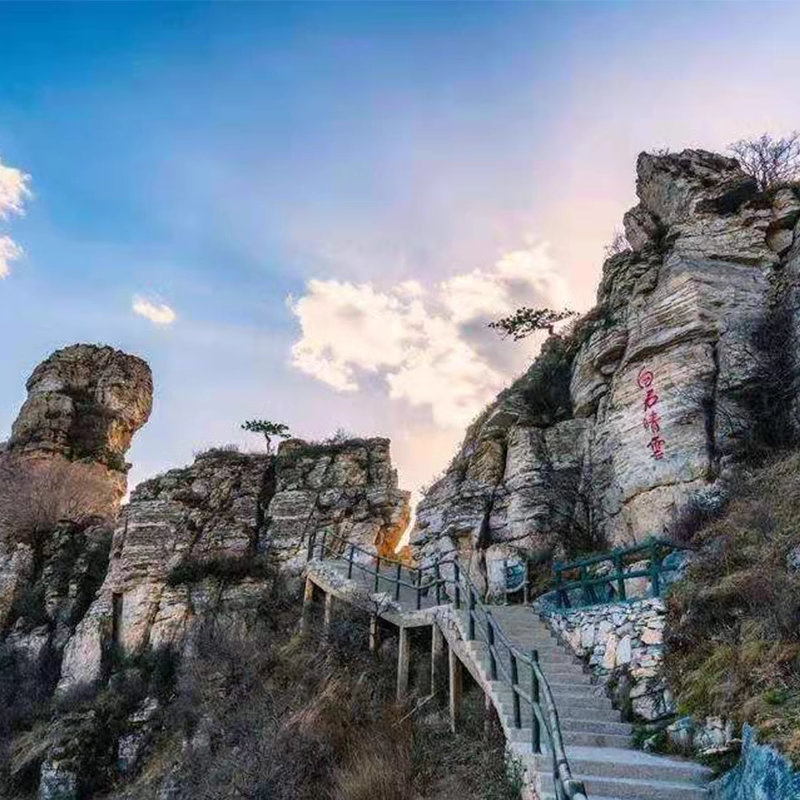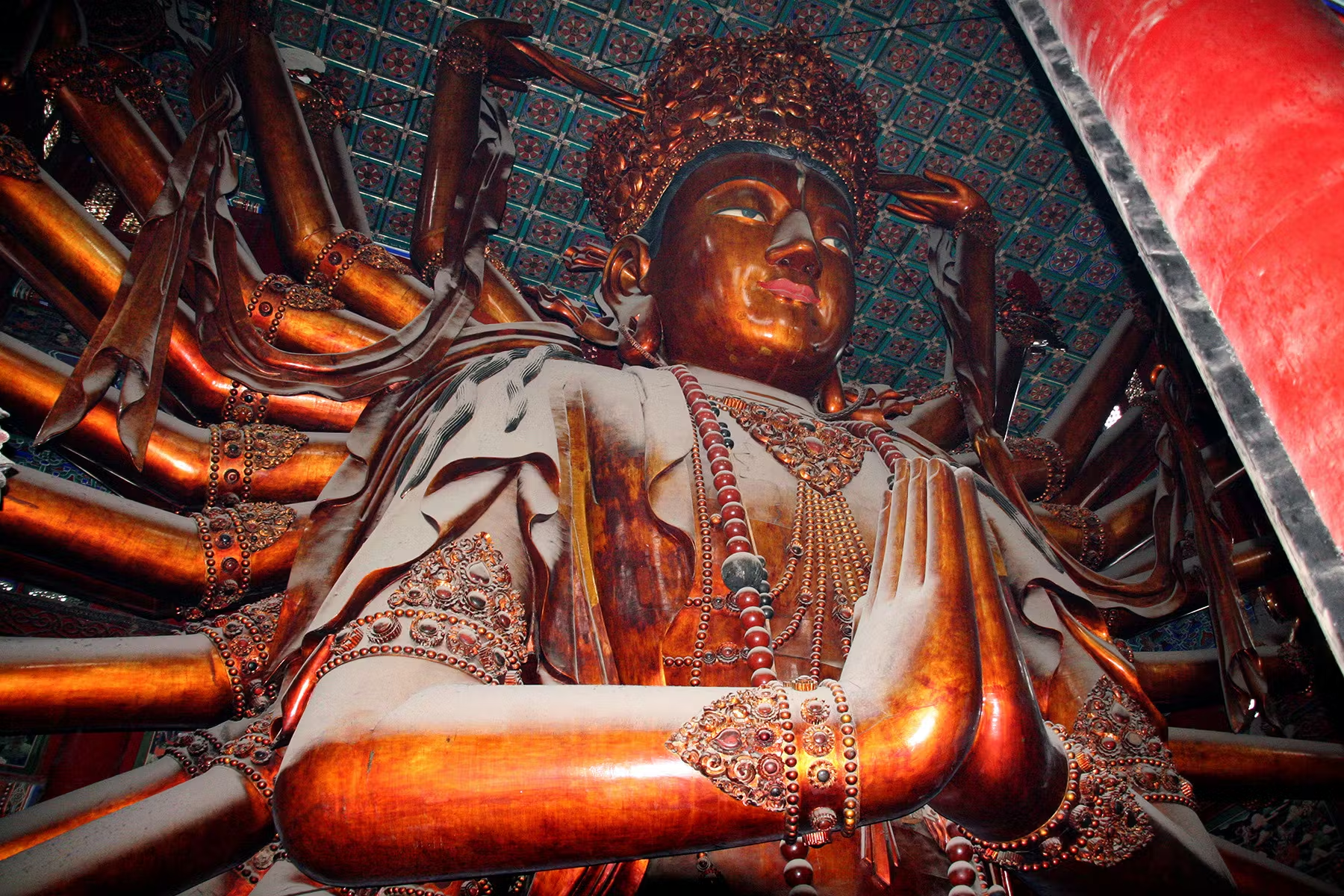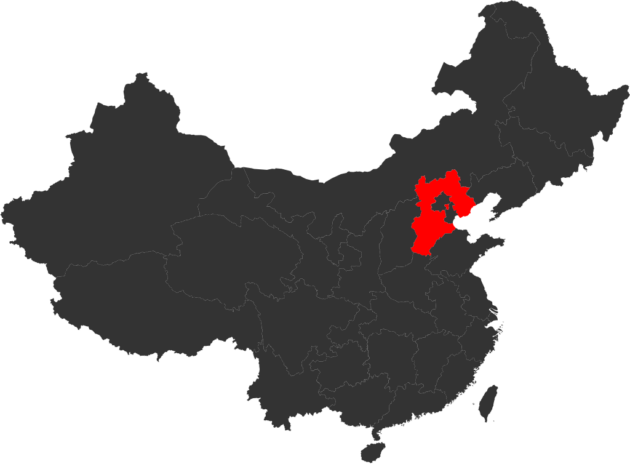Hebei Province, located in northern China, is a hidden gem for travelers seeking a blend of history, natural beauty, and cultural richness. Surrounding the bustling municipalities of Beijing and Tianjin, Hebei offers a quieter yet equally captivating alternative to its famous neighbors. With its diverse landscapes—ranging from coastal beaches to rugged mountains—and a history stretching back thousands of years, Hebei is home to some of China’s most iconic landmarks, including sections of the Great Wall and imperial retreats. Here’s a comprehensive guide to exploring this fascinating province as of April 2025.
A Travel Guide to Hebei
Why Visit Hebei?
Hebei’s appeal lies in its variety. It boasts five UNESCO World Heritage Sites: the Great Wall, Chengde Mountain Resort, the Grand Canal, and the Eastern and Western Qing Tombs. The province also features stunning natural scenery, from the grasslands of Bashang to the beaches of Beidaihe. Historically, Hebei was a cradle of Chinese civilization, with ancient states like Yan and Zhao leaving behind a legacy of cultural relics. Whether you’re a history buff, nature lover, or simply looking for an off-the-beaten-path adventure, Hebei has something to offer.
How to Get There
Hebei’s proximity to Beijing makes it easily accessible:
From Beijing: High-speed trains from Beijing West Station connect to major Hebei cities like Shijiazhuang (1 hour), Chengde (1 hour), and Qinhuangdao (1.5 hours). Driving is also an option, with expressways like the Jingzhang (Beijing-Zhangjiakou) taking 2–3 hours to key destinations.
By Air: Shijiazhuang Zhengding International Airport (SJW) serves domestic flights from cities like Shanghai, Guangzhou, and Xi’an. Smaller airports, like Chengde Puning (CDE), offer limited routes.
By Ferry: For coastal areas like Qinhuangdao, ferries from Tianjin provide a scenic alternative, though less common.
Best Time to Visit
Spring (March–May): Mild and windy, ideal for exploring the Great Wall or historical sites.
Summer (June–August): Hot and humid, perfect for beach trips to Beidaihe or escaping to the cool Chengde Mountain Resort.
Autumn (September–November): Crisp and clear, the best season for hiking and sightseeing, especially at Jinshanling Great Wall.
Winter (December–February): Cold and dry, great for skiing in Zhangjiakou’s Wanlong Ski Resort.
Top Attractions and Activities
Chengde Mountain Resort (承德避暑山庄) ★★★
Nestled in the northeastern corner of Hebei Province, approximately 225 kilometers (140 miles) from Beijing, the Chengde Mountain Resort—also known as the Imperial Summer Palace—is a UNESCO World Heritage Site and one of China’s most remarkable historical treasures. Built between 1703 and 1792 during the Qing Dynasty, this sprawling complex served as a summer retreat for emperors seeking respite from Beijing’s scorching heat. With its blend of imperial palaces, serene gardens, and surrounding temples, the resort offers a captivating mix of history, culture, and natural beauty.








Wulan Butong Grassland (乌兰布统大草原) ★★★
Wulan Butong Grassland, located in the Bashang region straddling the border of Hebei Province and Inner Mongolia, China, is a breathtaking destination known for its rolling hills, lush meadows, and rich history. Often referred to as a photographer’s paradise and a retreat from urban life, this grassland offers a blend of natural beauty, cultural heritage, and outdoor activities. While technically part of Inner Mongolia’s Chifeng City (Hexigten Banner), its proximity to Hebei’s Chengde City makes it a popular getaway accessible via Hebei routes.








Jinshanling Great Wall (金山岭长城) ★★★
The Jinshanling Great Wall, located in Luanping County, Chengde City, Hebei Province, China, is one of the most breathtaking and well-preserved sections of the Great Wall. Approximately 130 kilometers (80 miles) northeast of Beijing, this Ming Dynasty marvel offers a perfect blend of historical significance, architectural beauty, and stunning natural scenery. Known as the “Paradise of Photographers” and a hiker’s delight, Jinshanling provides a less crowded, more authentic experience compared to more tourist-heavy sections like Badaling or Mutianyu.








Mount Baishishan National Geopark (白石山国家地质公园) ★★★
Baishishan, or “White Stone Mountain,” gets its name from the white marble and dolomite that dominate its landscape, formed over a billion years ago. The geopark spans over 64 square kilometers and features more than 100 peaks, with the highest reaching 2,096 meters above sea level. Often compared to Anhui’s famous Mount Huangshan and nicknamed “Little Huangshan,” Baishishan boasts unique peak forest landforms, cascading waterfalls, and serene springs like Jumayuan. Its glass skywalks, perched on cliffs at dizzying heights, add a thrilling modern twist to the natural splendor, making it a standout destination in northern China.








Putuo Zongcheng Temple (普陀宗乘之庙) ★★
Nestled in the historic city of Chengde, Hebei Province, the Putuo Zongcheng Temple is a breathtaking Qing Dynasty Buddhist temple complex that blends Chinese and Tibetan architectural styles. Built between 1767 and 1771 under Emperor Qianlong’s reign, this UNESCO World Heritage Site is often called the “Little Potala Palace” due to its striking resemblance to the Potala Palace in Lhasa, Tibet. Spanning 220,000 square meters, it is the largest of Chengde’s Eight Outer Temples and offers visitors a unique glimpse into imperial history, Buddhist culture, and stunning landscapes.





Shanhaiguan Pass (山海关) ★★
Shanhaiguan Pass, located in Qinhuangdao City, Hebei Province, is one of the most iconic sections of the Great Wall of China. Known as the “First Pass Under Heaven,” it marks the eastern starting point of the Ming Dynasty Great Wall, where the ancient structure dramatically meets the Bohai Sea. This historic fortress, steeped in military significance and surrounded by stunning natural beauty, is a must-visit destination for history buffs, nature lovers, and adventurers alike.





Wanlong Ski Resort (万龙滑雪场) ★★
Located in the Chongli District of Zhangjiakou, Hebei Province, Wanlong Ski Resort is one of China’s premier winter sports destinations. Just 260 kilometers northwest of Beijing, this sprawling resort gained international fame as a venue for the 2022 Winter Olympics and is celebrated for its extensive slopes, modern facilities, and long ski season. Whether you’re a beginner hitting the snow for the first time or an advanced skier seeking thrilling runs, Wanlong offers something for everyone.








Puning Temple (普宁寺) ★
Built in 1755 under Emperor Qianlong, it stands as a testament to the Qing Empire’s efforts to foster unity among diverse ethnic groups. As one of the “Eight Outer Temples” near the Chengde Mountain Resort, a UNESCO World Heritage Site, Puning Temple offers a unique cultural and spiritual experience, highlighted by its towering wooden Bodhisattva statue—the tallest of its kind in the world.





Beidaihe Scenic Area (北戴河) ★
Beidaihe’s charm lies in its blend of natural splendor and accessibility. Stretching over 10 kilometers along the coast, the area offers soft sandy beaches, gentle sea breezes, and a laid-back vibe—perfect for unwinding. Its moderate climate, with cool summers and mild winters, makes it a year-round destination, though it truly shines from May to October. Beyond the beaches, Beidaihe is a renowned birdwatching haven, attracting flocks of migratory birds like red-crowned cranes and white storks during spring and autumn, earning it the nickname “China’s birdwatching mecca.”





Saihanba National Forest Park (塞罕坝国家森林公园) ★
Spanning 200.29 square kilometers, this vast park sits at the junction of the Inner Mongolian Plateau and the Yinshan Mountain range, offering a stunning blend of forests, grasslands, and plateau lakes. Once a barren desert, Saihanba was transformed into the world’s largest man-made forest through decades of reforestation efforts starting in 1962. Today, it’s a UNESCO-recognized ecological marvel and a paradise for nature lovers, photographers, and history enthusiasts.





Bashang Grassland (坝上草原) ★
Spanning over 16,000 square kilometers across Hebei and parts of Inner Mongolia, Bashang Grassland is characterized by its high plateau (1,300–2,100 meters above sea level), dotted with gentle hills, lakes, and grazing herds of sheep and horses. Historically, it was a strategic region, witnessing battles from the days of Genghis Khan to the Qing Dynasty’s imperial hunting grounds at Mulan Paddock. Today, it’s a peaceful haven where visitors can experience Mongolian culture, ride horses across the plains, and enjoy panoramic views of endless greenery. The grassland’s cool summers (averaging 18–24°C in July) and vibrant seasonal blooms make it a perfect retreat from Beijing’s heat.





Yesanpo Bailixia Scenic Area (野三坡百里峡景区) ★
Bailixia, meaning “Hundred-Mile Gorge,” stretches over 130 kilometers and comprises three distinct canyons: Haitang Valley, Shixuan Canyon, and Scorpion Gully. The area is celebrated for its steep cliffs, cascading waterfalls, and dense vegetation, creating a cool, refreshing microclimate even in summer. With temperatures averaging around 20–26°C (68–79°F) in the warmer months, it’s an ideal summer retreat. Beyond its natural beauty, Bailixia offers a glimpse into China’s geological history, with rock formations and landscapes that tell a story millions of years in the making.





Where to Stay
Shijiazhuang (Capital): Modern hotels like the Hilton Shijiazhuang or budget-friendly Jinjiang Inns.
Chengde: Stay near the Mountain Resort at Shangri-La Chengde or opt for guesthouses in the city center.
Qinhuangdao: Beachfront options in Beidaihe, like the Sheraton Qinhuangdao Beidaihe Hotel, or hostels in Shanhaiguan.
Zhangjiakou: Ski resorts like Wanlong offer on-site lodging; otherwise, try hotels in Chongli County.
What to Eat
Donkey Burgers (Lu Rou Huo Shao): A Shijiazhuang specialty—shredded donkey meat in a crispy bun.
Shandong-Style Seafood: In Qinhuangdao, enjoy fresh fish, clams, and crab influenced by nearby Shandong cuisine.
Hand-Pulled Noodles (Lamian): A hearty staple in inland areas, often served with meat or broth.
Roast Duck: A regional twist on the Beijing classic, found in Baoding and Chengde.
Practical Tips
Transportation: Hebei’s high-speed rail network is extensive—book tickets via Trip.com or at stations. Local buses and taxis are affordable for shorter trips.
Language: Mandarin is widely spoken; English is rare outside tourist hubs. Carry a translation app.
Packing: Layered clothing for variable weather, sunscreen for summer, and sturdy shoes for hiking.
Respect Local Rules: Follow guidelines at historical sites and natural reserves to preserve their integrity.
Final Thoughts
Hebei is a province of contrasts—where ancient walls meet modern ski slopes, and tranquil lakes sit beside bustling cities. Its proximity to Beijing makes it an easy add-on to a China trip, yet it offers a distinct experience that feels worlds apart. Plan your visit to Hebei for an unforgettable journey through China’s past and present!















Leave a Reply